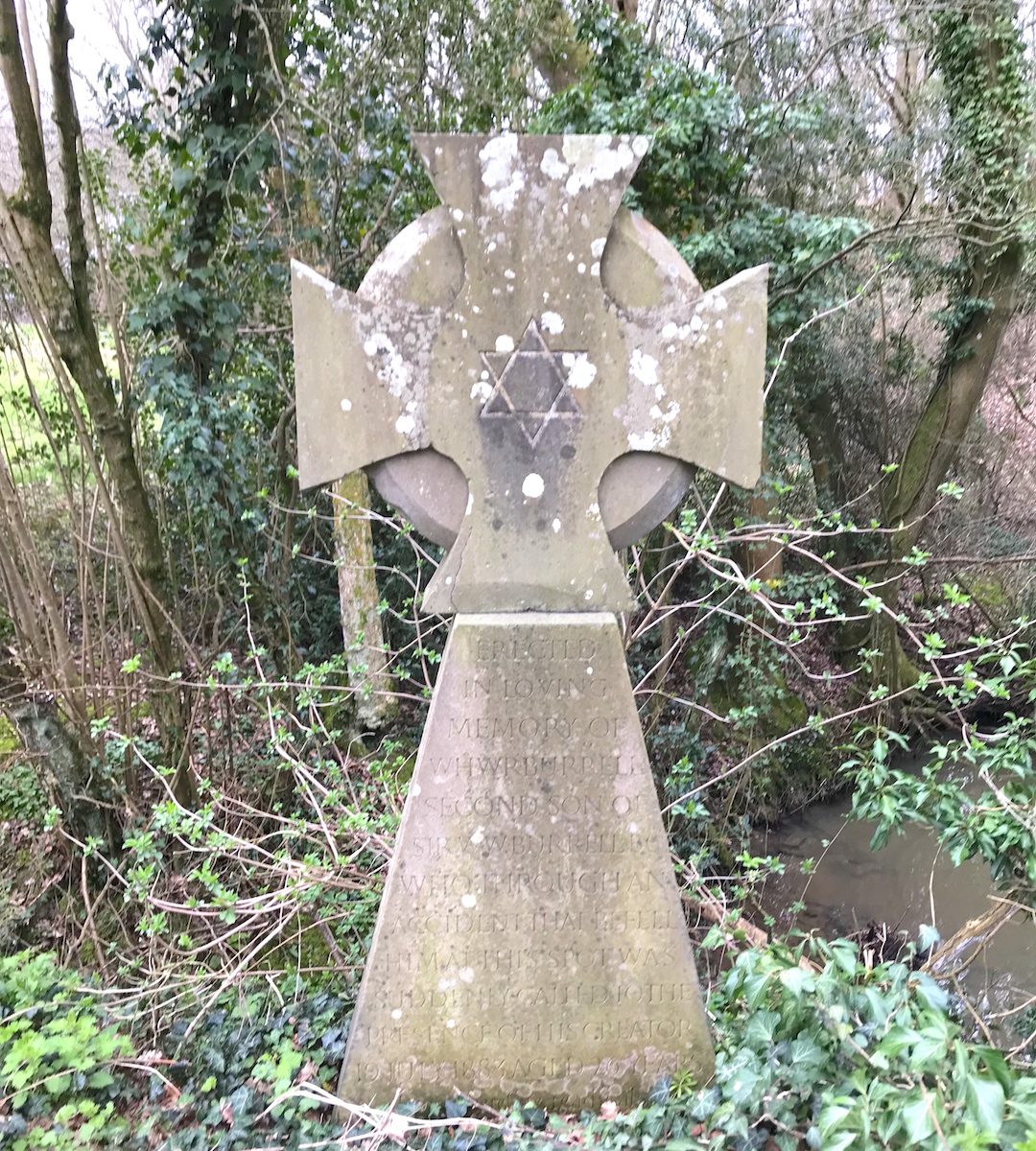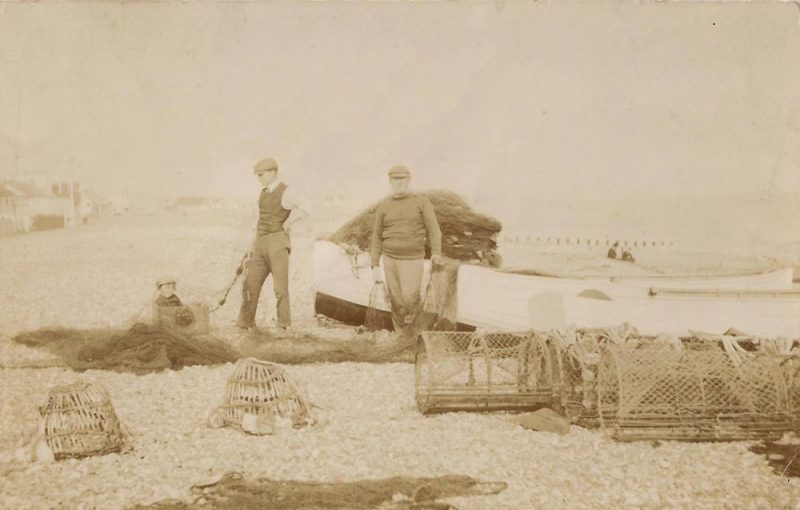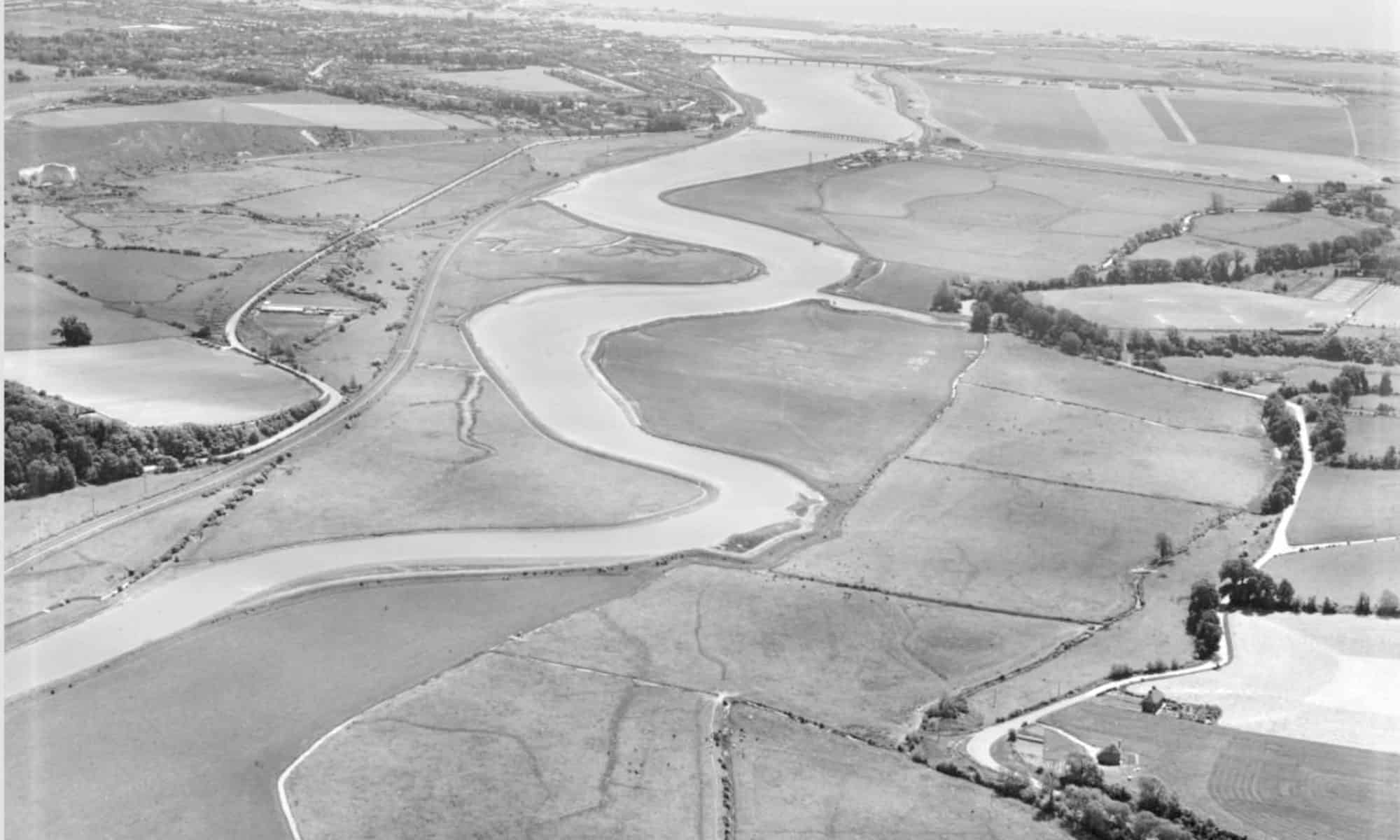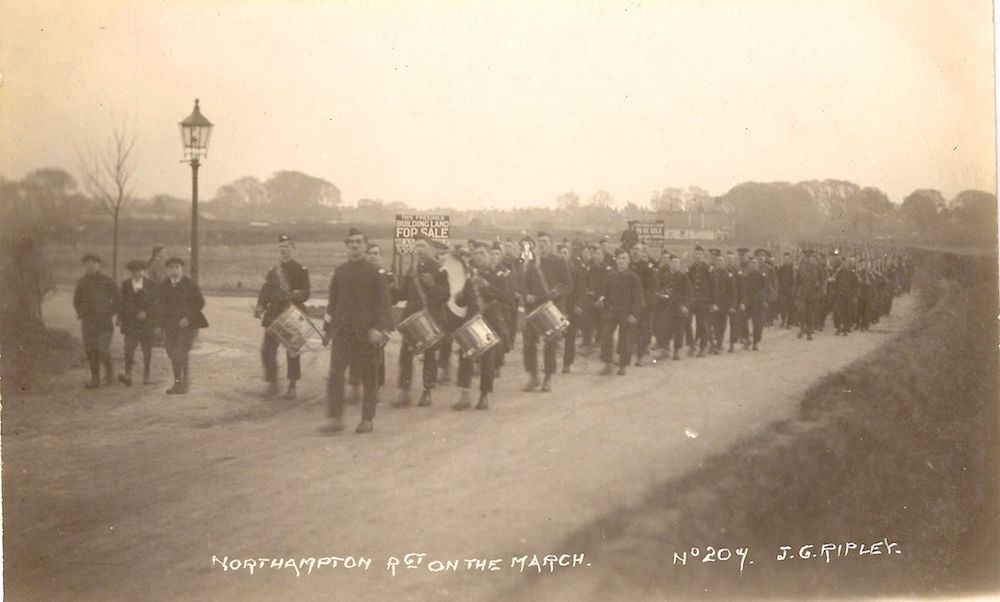Having read about the V1 flying bomb that detonated near the top of Eastern Avenue (Bombing and Other Incidents http://www.shorehambysea.com/bombing-incidents-ww2/ ) Gail Underhill has asked for any wartime photos of Eastern Avenue. This one comes courtesy of Sue Vincent that shows VE Day celebrations with Eastern Avenue houses in the background and perhaps one of them showing repaired roof tile damage. Due to restrictions then wartime photos are difficult to find – does anyone have any others?
Nab Tower – Mystery Tower 1
During the First World War, the British Admiralty designed eight towers codenamed M-N that were to be built and positioned in the Straits of Dover to protect allied merchant shipping from German U-boats. Designed by civilian Guy Maunsell, the towers were to be linked together with steel nets and armed with two 4-inch guns with the idea of closing the English Channel to enemy ships.
HMS Lizard and landing craft
These are the only local photos of the landing craft and locations at HMS Lizard that I know of – although I’m sure I’ve seen a painting of WW2 landing craft lined up at Shoreham but can’t find it now. The Landing Craft at Holmbush roundabout is one of the widely used Higgins landing craft but that particular one wasn’t necessarily actually used at Shoreham.

Dating photos
The two photos of Stow & Sons yacht-building sheds were almost certainly taken within a short time and distance of each other. There are a number of clues including the same yachts moored in front of the sheds but most significantly of all is the man working on one of the masts.
The large yacht below has been identified as the Rosalind built in 1904 by Stow but there is a date 26th August 1906 written in ink on the reverse. Built for owner Charles Hellyer and registered at Hull it voyaged widely but, significantly, Lloyds Yacht Registers record it returning to Shoreham for the vessel’s annual survey in 1906 and is likely to be the date of that photo.
Of all the photos we have of Stow yachts it is only the Rosalind that has a cranked, forward leaning mizzen mast so close to the stern. Amongst the vessels in the other photos the fourth yacht from the left also has a cranked mizzen mast (marked X) in a similar position and therefore more likely to be the Rosalind and of a similar date.
Imperial Laundry
An advertisement for the Imperial Laundry kindly donated by Lorraine Luke – it stood near the viaduct and this newspaper photo of a near miss by a German bomb is described in
http://www.shorehambysea.com/shorehams-war/

A Roadside Memorial
During the 1950’s when roads were much quieter we would occasionally cycle up to West Grinstead railway station where one of my predecessors served as stationmaster there in the 1880’s. Rather than returning on the busier road we would drop down to pick up the B2135 to Partridge Green and on to Shoreham.
The first part of the route took us past the catholic church ‘Shrine of Our Lady of Consolation’ at West Grinstead, resting place of the much loved Sussex writer and historian Hilaire Belloc and his wife, then continued along a pretty, meandering switchback of a road with occasional views in the distance to the South Downs.
A Fisherman’s Tale – the Maple Family
For centuries Shoreham folk have earned a living from the sea and one hundred years or so ago the fishing families of Ratcliffe, Page, Laker and Maple were prominent. Perhaps the best known of them were the Maples who sold their fish and oysters from their shop at the west end of the High Street in one of the ancient cottages that once stood alongside the King’s Head pub. Continue reading “A Fisherman’s Tale – the Maple Family”
Tragedy at Old Erringham
1942: 7 Canadian Soldiers die in accident on the river
The West Nova Scotia Regiment had been carrying out defensive and security duties at various places in the southeast of England before arriving at Worthing on the 22ndNovember 1941 from their previous posting at Newhaven. Here they took over responsibility for the area including Shoreham Airport from the Royal Welsh Fusiliers. The official strength of the Regiment at the time was 36 officers and 840 other ranks.
In the Shoreham area some billeting was arranged for the Canadians in local residents homes but others were also thought to have been housed at the Grammar School in Pond Road (the pupils had been evacuated) and more under canvas in the school’s playing fields, now the Greenacres housing estate, where a searchlight, anti aircraft gun and heavy machine gun emplacements were installed
Besides their day-to-day duties the men, like all soldiers from whatever regiment or country at the time, received ongoing training, route marches and exercises. The latter were necessarily made as realistic as possible to harden the men in readiness for what was anticipated to be an eventual return to the continent and renewed face-to-face conflict with the enemy.
Continue reading “Tragedy at Old Erringham”Shoreham’s Mystery Seaplane Base
A chance swop of postcards between collectors Neil De Ville and Alan Humphries revealed previously unnoticed buildings on Shoreham Beach. The image is of the old Norfolk Suspension Bridge and across the river below the bridge span two large shed-like structures can be made out.

The image has been postitively dated as 1921 by local historians at the time when the Bridge was being prepared for demolition so what were the mysterious buildings for? Their location looked to be near Ferry Road and at first sight 1927 aerial photographs seemed to confirm this by showing their likely footprints on the beach, not just of the structures but also a concrete raft or apron on their seaward side.
Continue reading “Shoreham’s Mystery Seaplane Base”Albert Warren of the Northamptonshires
One of the regiments that carried out their training at Shoreham during WW1 was the Northamptonshire Regiment. Unusually despite wartime restrictions their stay there and at Southwick is comprehensively recorded in numerous photographs that were taken at the time.
One soldier who served with the Northamptonshires and trained at Shoreham was Albert Warren of whom we are lucky enough to know a little more through a magazine article in Albert’s home town and letters that he wrote home whilst serving his country.
Before the war Albert, or Bert to his friends and family, worked with his father at the local brickworks and at the outbreak of hostilities at the age of 21 enlisted with the 7thBattalion of the Northamptonshires.











